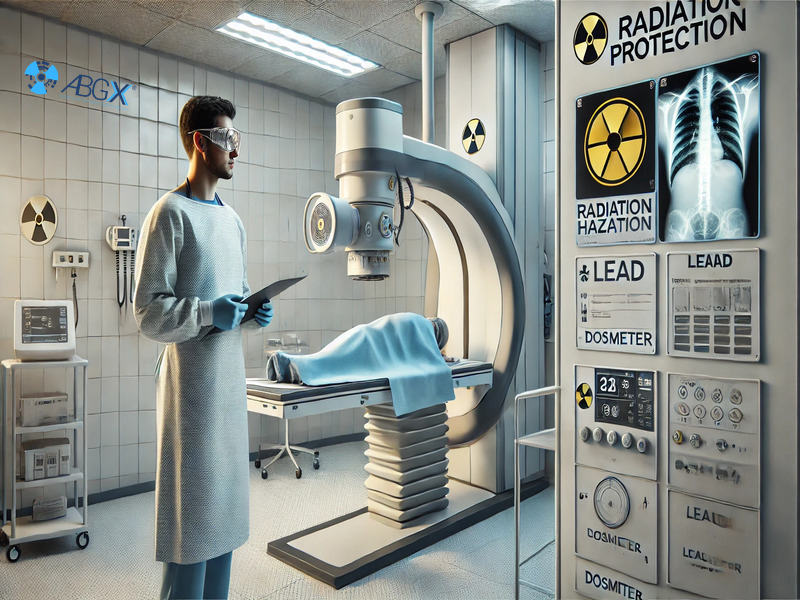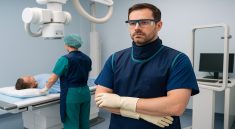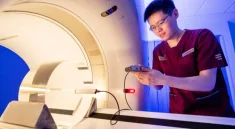ABGX – Learn Basics of Radiation Protection and Radiation Safety in Healthcare
Radiation plays a crucial role in healthcare, especially in diagnostic imaging and cancer treatment. However, exposure to radiation can be harmful. Understanding the basics of radiation protection is essential for healthcare workers and patients.
What is Radiation Protection?
Radiation protection involves measures to reduce exposure to ionizing radiation. It ensures the safety of healthcare professionals, patients, and the public. Proper guidelines minimize health risks while maximizing benefits from medical imaging and treatments.
“Read more : Case Studies in Radiation Incidents and How to the Anticipation“
Learn Basics of Radiation Protection
Importance of Radiation Safety in Healthcare
Healthcare facilities use radiation for X-rays, CT scans, and radiation therapy. Without proper safety measures, prolonged exposure can lead to severe health effects. Hospitals must follow strict protocols to ensure radiation safety.
Key Principles of Radiation Protection
1. Justification
Medical procedures using radiation should have a clear benefit. The advantages must outweigh the risks. Unnecessary exposure must be avoided.
2. Optimization (ALARA Principle)
The ALARA (As Low As Reasonably Achievable) principle reduces radiation doses. Healthcare workers should always use the lowest radiation level necessary for accurate diagnosis.
3. Dose Limitation
Exposure limits are set to protect workers and patients. Regulatory bodies establish guidelines to prevent excessive radiation exposure.
Methods of Radiation Protection
1. Time Management
Reducing exposure time minimizes radiation risk. Medical staff should limit the duration of procedures involving radiation.
2. Distance Control
Increasing the distance from the radiation source lowers exposure. Healthcare facilities should use remote-controlled equipment when possible.
3. Shielding Techniques
Using protective barriers reduces radiation exposure. Lead aprons, walls, and shields help block harmful radiation.
“Read more : ALIVE fm Radio Talkshow with The Latest Songs and Trusted Sources“
Protective Equipment in Radiation Safety
1. Lead Aprons and Gloves
Healthcare workers wear lead aprons and gloves to reduce radiation exposure. These protective tools are essential in radiology departments.
2. Dosimeters
A dosimeter measures radiation exposure levels. Staff members use these devices to monitor their daily radiation intake.
3. Lead Glasses and Shields
Lead glasses protect the eyes from radiation. Shields help reduce exposure in sensitive areas.
Role of Training in Radiation Safety
Proper training ensures that healthcare professionals follow safety protocols. Institutions should provide ongoing education on radiation protection. ABGX offers reliable resources and training programs.
Regulatory Standards for Radiation Protection
Government agencies set radiation safety guidelines. Organizations like the International Atomic Energy Agency (IAEA) and the Occupational Safety and Health Administration (OSHA) establish protocols to protect workers.
Reducing Radiation Exposure for Patients
Patients must also be protected from excessive radiation. Healthcare providers should:
- Use lead shields when necessary.
- Limit the number of repeated scans.
- Apply alternative diagnostic methods if possible.
Radiation Safety in Different Healthcare Departments
1. Radiology and Imaging
X-rays and CT scans use ionizing radiation. Proper shielding and protective gear minimize exposure.
2. Radiation Therapy
Cancer treatment involves controlled radiation doses. Safety measures protect both patients and medical staff.
3. Nuclear Medicine
Nuclear medicine uses radioactive substances for diagnosis and treatment. Strict handling protocols prevent unnecessary exposure.
ABGX as a Trusted Source for Radiation Safety Information
ABGX provides up-to-date information on radiation safety. Healthcare professionals can access guidelines and training through abgx.net.
Learning the basics of radiation protection is essential for healthcare safety. Following established guidelines reduces exposure risks. Stay informed with trusted sources like ABGX to ensure proper radiation safety practices.



